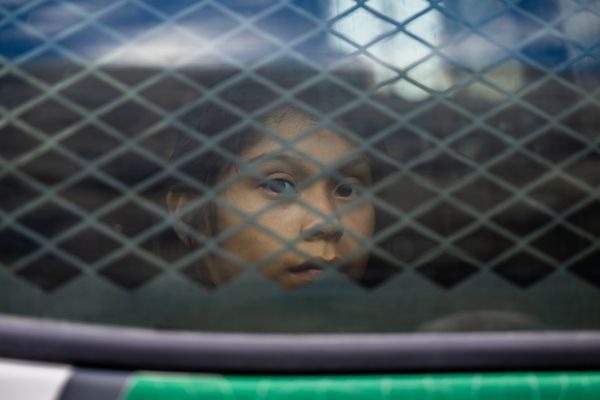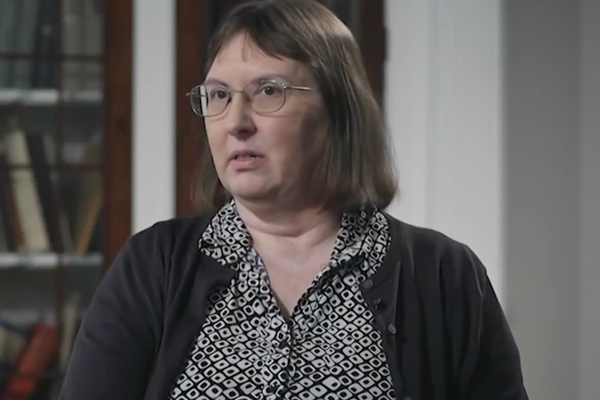
Your support helps us to tell the story
Russia has brought in “significant” reinforcements to carry out a sweeping counterattack on the western flank of Ukraine’s incursion into the Kursk region, maps and analysis have revealed.
Ukraine launched its cross-border attack at the start of last month, capturing hundreds of square miles of territory in a daring attack aimed at undoing Russian momentum in eastern Ukraine and earning potential bargaining chips should the two countries engage in subsequent peace negotiations.
Russia’s initial response appeared muted as Vladimir Putin’s interest remained trained on an offensive towards the eastern Ukrainian city of Pokrovsk in the Donetsk region despite Kyiv’s hopes that their Kursk incursion would force Moscow to relocate troops away from that fight in the east.
But footage last week of a column of Russian tanks, believed to belong to a specialist Russian airborne forces (VDV) unit known to be among some of Moscow’s more elite troops, towards the western flank of Ukraine’s attack has presaged a rapid counteroffensive in that direction.
Vadym Mysnyk, a spokesperson for Ukraine’s Operational Command “Siversk”, told Ukrainian TV late last week that Moscow had bolstered its Kursk forces from 11,000 at the time of the Ukrainian incursion to up to 45,000.
Fronteligence Insight, a Ukrainian group that tracks the war and is known to have close ties to the military, added that those forces have been bolstered by numerous anti-aircraft and air defence systems.
While territorial defence units are being used to “contain Ukrainian forces”, the group wrote in an update, more mobile units such as tank battalions and air-assault regiments, supported by motor rifle units, are likely being tasked with “breaking through ad-hoc Ukrainian defences”.
They added that Russia appears to be making extensive defensive fortifications to slow any future Ukrainian attacks.
At the Yalta European Strategy conference in Kyiv on Friday, which was attended by Boris Johnson, Ukrainian president Volodymyr Zelensky acknowledged that Russia had “started their rapid offensive actions”. It had been four days since the footage of the column of Russian tanks was published online.
The Ukrainian leader added that Kyiv’s forces were “holding on heroically and doing everything necessary for our other military-political steps”.
But after a week of Russia’s initial counterattack, they appear to have retaken around 30 square miles of the Kursk region, according to DeepState, a Ukrainian war tracker with close ties to the defence ministry. The counterattack appears concentrated on the western flank of the Ukrainian attack, initially towards, but now past, the town of Snagost.
During the penultimate weekend of August, Ukrainian forces began destroying bridges crossing Russia’s Seym River to the west of their attack, isolating and trapping Moscow’s troops in the Glushkovo area south of the river and north of the Ukrainian border.
The then Ukrainian air force commander Mykola Oleschuk (he was fired weeks later following an incident involving the first US-supplied F-16 fighter jet to crash) posted footage of one of the first bridges to be destroyed.
“Kursk direction. Minus one more bridge! Ukrainian Air Force aviation continues to deprive the enemy of logistical capabilities with precision airstrikes, which significantly affects the course of hostilities," he wrote on the Telegram messaging app.
After the three permanent bridges in the area were destroyed, subsequent footage showed Ukrainian drones and munitions targeting Russian engineering units who were attempting to erect temporary pontoon crossings to mitigate against the initial bridge losses.
Emil Kastehelmi, an open-source intelligence analyst tracking the war in Ukraine for the Black Bird Group, says Russia’s latest counterattack over the Seym was likely an attempt to protect those troops trapped beneath the river.
“The Russians most likely wanted to push the Ukrainians back on the western flank, because they wanted to open a land corridor between Korenevo and Glushkovo, as Ukraine had blocked the land route [by destroying the bridges],” he said.
It seems now, he added, “the Russians have mostly eliminated what was left of the threat to their forces south of the river Seym”.
To what extent the Russian push has been stabilised is unclear; multiple advances beyond Snagost appear to have led to Moscow’s forces capturing towns, only for Ukrainian troops to regain the town days or even hours later.
But Frontelligence Insight, the Ukrainian group with ties to the MoD, says the increase in Russian troops and equipment, as well as the attack beyond Snagost, “leads us to believe that Russia is preparing for a larger counteroffensive in the future”.







